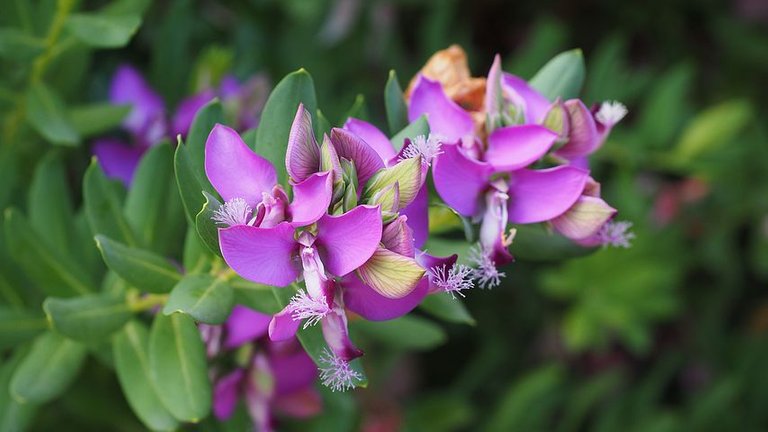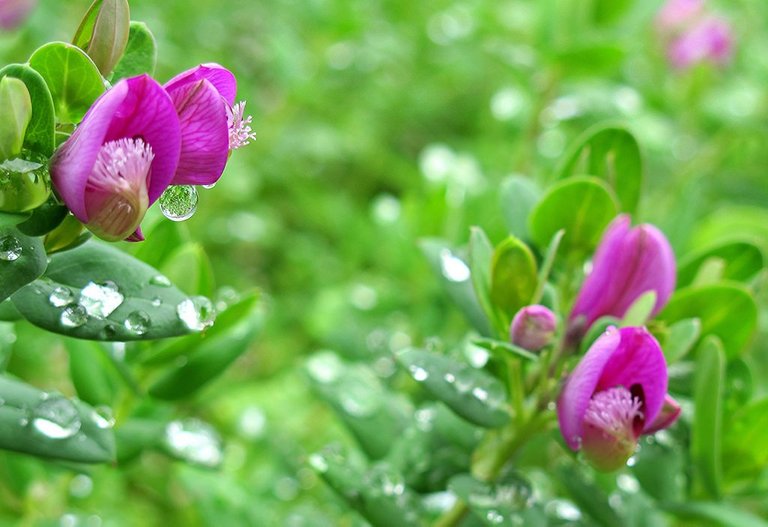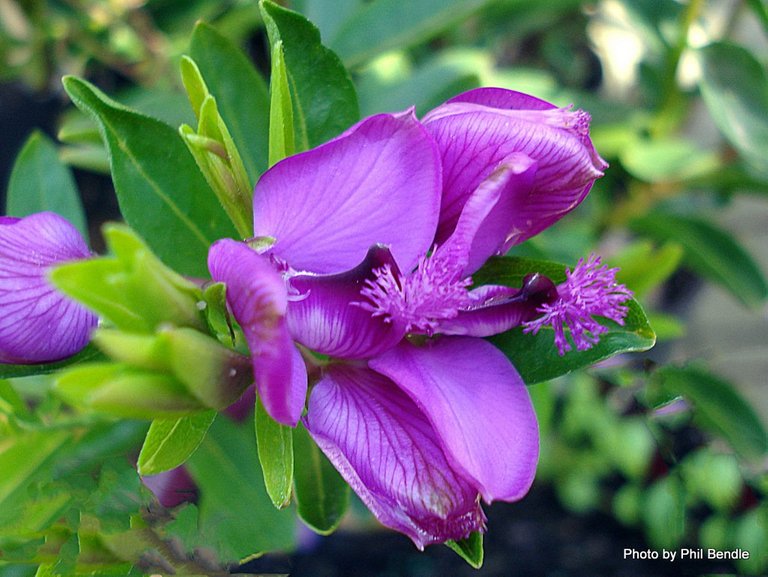Polygala myrtifolia, the myrtle-leaf milkwort, is an evergreen 2-4m tall South African shrub or small tree found along the southern and south-eastern coasts, from near Clanwilliam in the Western Cape to KwaZulu-Natal. It is a fast-growing pioneer plant, a typical fynbos component, and may be found on dunes, rocky places, along forest margins, beside streams, and in open grassland. It belongs to the milkwort family of Polygalaceae.

Source
The thin, oval, mucronate leaves, 25–50 mm long and up to 13 mm wide, are arranged alternately and have entire margins - some forms of P. myrtifolia have thin, needle-like leaves. The attractive mauve sweetpea-like flowers, which close at night, may also be pink, crimson or white, and have a characteristic brush-like tuft protruding from the keel. For pollination an intricate piston mechanism is used. The fruit is an oval, brown, dehiscent capsule which is narrowly winged. The species is often cultivated in South African gardens.

Source
The genus of Polygala comprises some 360 species with a wide distribution in the tropics and temperate zones. 'Polygala' is interpreted as 'much milk' since the plant was thought to stimulate milk production in European cows - 'myrtifolia' translates as 'myrtle-shaped leaves'.
Source
This species has become naturalised in some of the coastal areas of Australia, Norfolk Island, New Zealand and California.
Source
Sort: Trending
